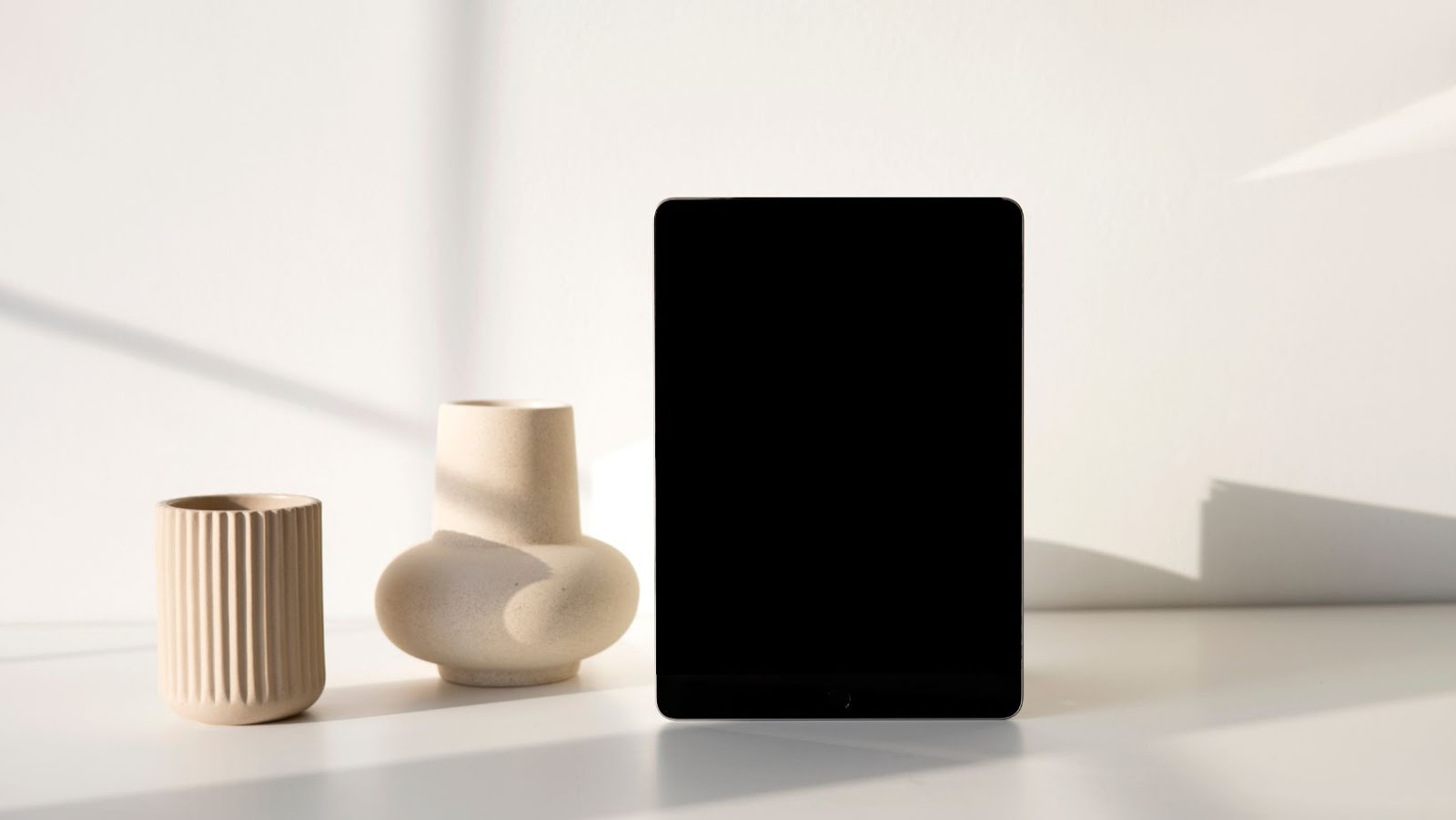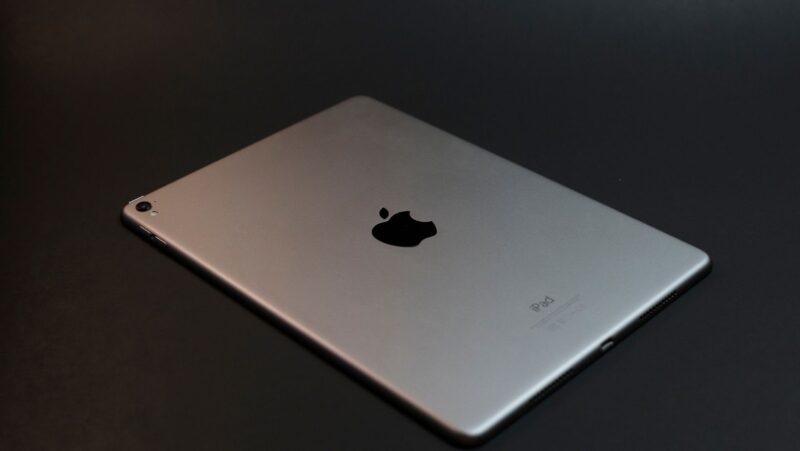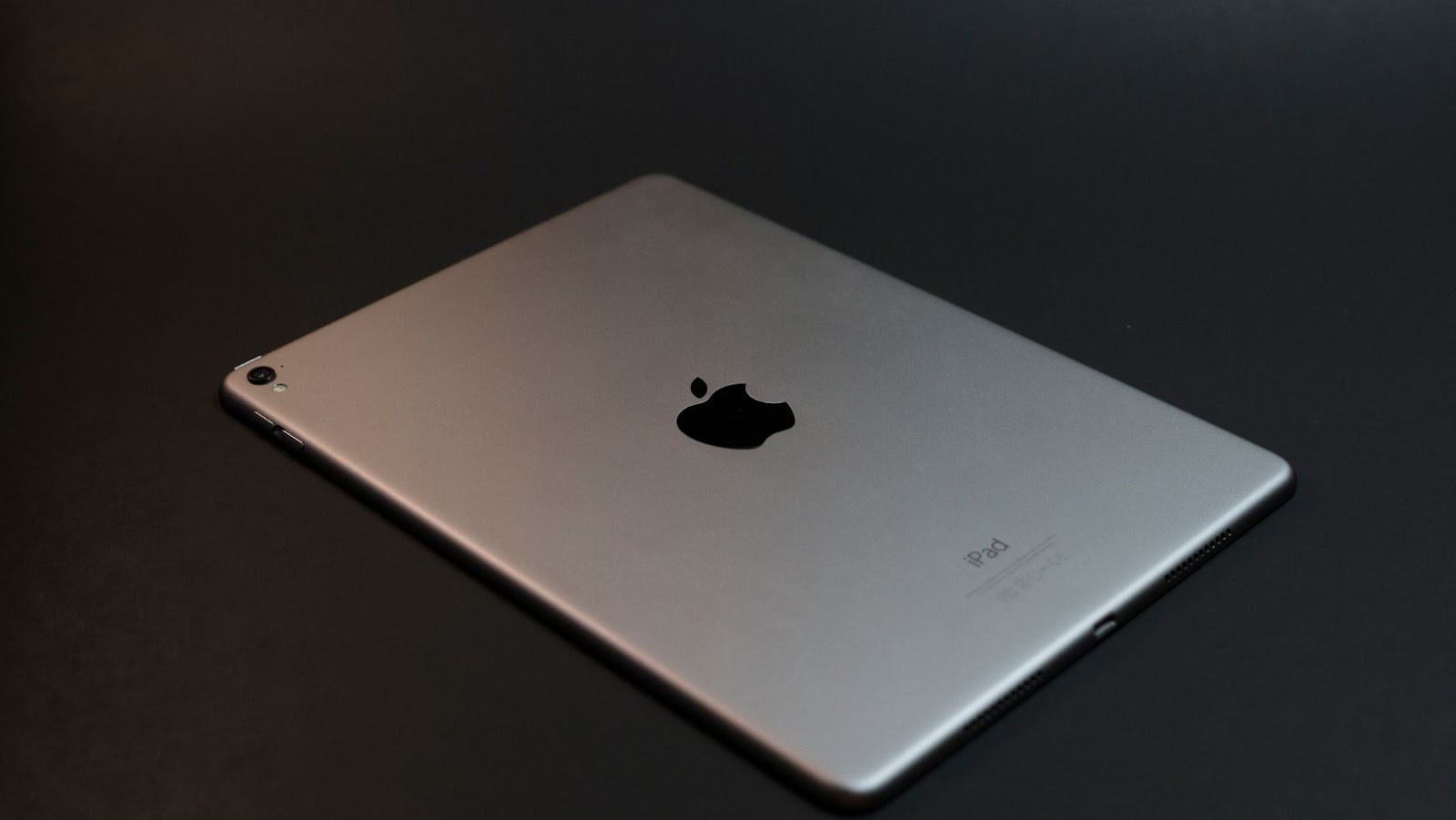

Let’s explore why this decision might be made and its effects on the sales of the iPad Pro.
Overview of the iPad Air
The fourth-generation iPad Air is an upcoming tablet computer designed, developed, and marketed by Apple. It will be the successor to the third-generation iPad Air, both part of the iPad Air lineup and powered by Apple’s A14 Bionic system-on-chip. The fourth-generation iPad Air is anticipated to have a screen size of 10.9 inches and was originally rumored to be using OLED display technology. However, recent reports claim that the device will use an LCD to avoid potential harm to Apple’s 11-inch iPad Pro sales.
The new features that are expected on the upcoming fourth-generation iPad Air include an improved processor for greater performance, 5G radio for faster data speeds, a USB Type-C port for connecting external devices, bigger stereo speakers for enhanced audio quality, a TrueDepth camera system allowing facial recognition and secure biometric authentication amongst other features such as MagSafe wireless charging and compatibility with Apple’s latest Pencil accessories. Additionally, rumors have suggested that it may feature Touch ID located on the power button on its side instead of Face ID on its predecessor, which had been embedded into the bezel of its display panel.
Apple’s decision to use LCD instead of OLED
An interesting report from the Japanese blog Mac Otakara recently suggested that the upcoming 2022 iPad Air will use a Liquid Retina LCD instead of Mini LED or OLED display solutions. This decision is apparently being made due to Apple’s desire to avoid cannibalizing its 11-inch iPad Pro sales.
It is no secret that Apple’s ARM-powered MacBooks and the iPad tried their best to meet the demands of the average consumer and professional user alike, with each device addressing its own needs. For example, introducing the iPad Pro with Mini LED panels was a crucial development for professionals needing an intense editing system. This has resulted in a higher-end experience than basic iPads, so it makes sense that Apple would want to preserve this experience while offering something similar yet different with its new 2021 updates.
The refreshment cycle for both devices appears identical right now, with an expected refresh every fall. However, according to the report, using Mini LED or OLED displays on future iPad Air models could negatively impact sales of Apple’s pricier 11-inch iPad Pro model, which features a native miniLED panel. Therefore, despite having high expectations that the iPad Air may boast an OLED panel this fall, Apple decided against it for fear of overshadowing its 11-inch flagship product line.
Reasons for Apple’s Decision
Apple’s recent announcement that the 2022 iPad Air will not use OLED technology has been met with some puzzlement by industry watchers.
This article will discuss why Apple made this decision and what impact it may have on the sales of its 11-inch iPad Pro.
Cost of OLED
One of the primary reasons that Apple decided to forgo OLED displays for the 2022 iPad Air is cost. Despite offering improved contrast and color reproduction, OLED displays are significantly more expensive than LCD displays. Additionally, OLED displays tend to have a shorter lifespan than LCDs, leading Apple to conclude that having two iPad models on the same production line with different display tech would be too complex from an operational perspective.
The higher cost of OLEDs would also have allowed competitors to undercut Apple’s 11-inch iPad Pro base model in price. The 11-inch iPad Pro retails for $799, while rivals like Microsoft offer similar features at a lower price point. By choosing an LCD over an OLED display on the 2022 iPad Air, Apple can keep production costs low while offering users a quality product without significantly impacting the larger 11-inch iPad Pro’s sales.
Impact on 11-inch iPad Pro sales
Apple’s decision to equip the forthcoming 2022 iPad Air with LCD rather than OLED display technology is likely to prevent its sales results for the 11-inch iPad Pro from decreasing. As Apple’s high-end flagship device, the 11-inch iPad Pro features an OLED display technology, so by equipping the mid-end model iPad Air with LCD, there is less chance of cannibalization of the 11-inch iPad Pro sales, and it can continue to remain attractive for high-end customers.
The OLED technology possesses a more vivid color accuracy compared to LCD, and despite their differing price points, a dazzling display may be all that is needed to steal customers away from Apple’s flagship device and lead those who are budget conscious towards the mid-range product. Therefore, it would be far wiser for Apple to keep both products at distinctively different levels of quality and prevent losing out on sales by having them overlap.
Moreover, an additional advantage that LCD provides over its OLED counterpart is extended battery life, usually twice as much. Therefore, not only will it provide an excellent experience using mobile apps, but it can also extend usage in between charges – something which highly appeals to customers with long working hours that require them to stay connected with their devices for times at a go.
Availability of LCD
The decision for the 2022 iPad Air not to use OLED display technology, as previously speculated, is likely related to the availability of LCD. Apple often prefers LCD displays for their iPads as they are cheaper and easier to produce in high quantities. Despite reports that there was a shortage of LCDs caused by weak demand from automakers, sources indicate that Apple has been able to secure enough supply for its iPads.
Another reason why Apple may have chosen LCD instead of OLED is because of its existing iPad lineup. Keeping the iPad Air models powered by a lower-cost LCD panel avoid cannibalization of the higher-end 11-inch iPad Pro models, which feature an OLED display technology and come with more advanced features like Face ID and USB-C support. In doing so, they prevent damaging sales of the higher-end device while still providing customers with orders choices in terms of size and cost.
Benefits of LCD
According to reports, the 2022 iPad Air will only use OLED in order to avoid competing with the 11-inch iPad Pro that uses OLED. This highlights the benefits of LCD and how it can be a viable option for tablets that want to avoid direct competition.
In this section, we will discuss the possible benefits LCD offers compared to other display technologies.

Lower cost
One of the main benefits of using Liquid Crystal Display (LCD) technology over OLED in the 2022 iPad Air is that it is significantly less expensive. OLED panels are more difficult and costly to produce, while LCD screens require fewer components, making them a more affordable solution. As a result, companies can reduce costs by using LCD technology, which will help keep prices low for customers when purchasing tablets, laptops, and other consumer electronics devices.
LCDs also benefit from a longer lifespan due to higher life expectancies and fewer image retention issues that are common with OLEDs. Additionally, LCDs offer better visibility in various forms of ambient light as opposed to OLED technology – making them ideal for outdoor activities, such as playing sports or viewing digital maps. They are also much easier to repair and upgrade than their OLED counterparts due to their use of simpler wiring systems.
Improved battery life
One of the key benefits of using Liquid Crystal Display (LCD) technology is improved battery life. Unlike OLED displays, LCDs do not require additional power for pixels to remain lit, and as a result, LCD displays consume less energy than OLED displays in general. With fewer pixels drawing more power from the device, LCDs can offer users a longer-lasting battery life that can increase their productivity.
Additionally, devices with LCDs are typically more lightweight than their OLED counterparts, making them better suited to long sessions of use or travel where weight can be an important factor. This means that users who may be concerned about the bulk of carrying multiple devices can rest assured that they will be able to enjoy all-day battery life on a single machine without sacrificing performance or features.
More vibrant colors
One of the major advantages of LCD is its ability to produce more vibrant colors than OLED displays. This is because LCD panels use backlighting technology which illuminates each pixel on the screen and provides a more consistent brightness throughout the show. This makes it optimal for watching videos and playing games, as it offers a lifelike, immersive experience.
Additionally, the special backlight filters prevent ghosting and reduce power consumption, resulting in a longer battery life than OLED displays. The recently announced 2022 iPad Air will use LCD panels to avoid “cannibalizing” sales from its 11-inch iPad Pro, released earlier this year with an OLED display.
Although Apple could have opted to use OLED panels for its revamped iPad Air, its decision to stick with LCD instead shows appreciation for existing sales volumes of the iPad Pro line.
2022 iPad Air won’t use OLED to avoid harming 11-inch iPad Pro sales
Apple is reportedly choosing to stick with LCD technology for the upcoming 2022 iPad Air, instead of adopting OLED technology like in the 11-inch iPad Pro, reportedly in order to avoid cannibalizing the Pro’s sales. This could have a consequence on the upcoming iPad Air, as OLED technology offers more vivid colors, deeper blacks, and improved power efficiency.
Let’s explore the potential implications this could have on the iPad Air.
Lower cost
The potential decision to avoid using OLED displays in the 2022 iPad Air could impact the cost of the device. Rather than purchasing more expensive OLED screens, Apple may opt for LCD panels which are typically less expensive.
This could result in a potentially lower cost for the iPad Air, allowing it to compete with other competitively priced tablet offerings from other companies and making it more accessible to a wider base of consumers.
In addition, it contributes toward making the 11-inch iPad Pro more attractive by offering features not found in the entry-level iPad Air model, such as ProMotion and Face ID.
Improved battery life
The switch from OLED to LCD panel for the 2022 iPad Air could have an impact on its battery life. LCDs have much lower power consumption than OLED displays. This means that devices equipped with LCDs generally have better battery life than those with OLED panels.
Additionally, Apple’s background display technologies (such as True Tone and Wide Color) offer more flexibility with stand-by time, meaning the iPad Air can stay off the charger longer than it would with an OLED panel. Its fanless M1 chip and advanced thermal management system will enhance the battery life.
This combination could make the new iPad Air’s battery last even longer while providing performance gains over most laptops available today.

More vibrant colors
For years, rumors and speculation suggested that Apple is planning to implement OLED displays in its iPad lineup. But recently, it was reported that the company has decided not to use OLED panels for the upcoming 2022 iPad Air. This means that another year will pass before users can enjoy the more vibrant and lifelike colors characteristic of OLED technology.
By avoiding OLED displays in the upcoming iPad Air, Apple is effectively protecting its higher-end 11-inch iPad Pro line from cannibalizing sales. While users may miss out on the enhanced display quality of an OLED panel, there are still many benefits to be had with LCD technology.
LCD panels offer many features including good brightness levels and wide viewing angles without color shifting or fading at different points on the screen. Additionally, this technology eliminates motion artifacts to provide a smoother picture quality when playing video games or watching television shows or movies. Additionally, they deliver longer battery life due to their less demanding hardware requirements than their OLED counterparts.
The decision not to include an OLED display in the 2022 iPad Air may initially seem like a step backward for user experience; however, Apple’s focus on prioritizing user needs makes it highly unlikely that loyal customers will be left disappointed for very long!
Conclusion
From the analysis above, it is clear that Apple has chosen not to use OLED for the upcoming 2022 iPad Air due to fears that it could potentially hurt the sales of the 11-inch iPad Pro.
Although the OLED panel could offer better image quality and battery life, Apple is instead opting to use a more traditional LCD panel to ensure the 11-inch iPad Pro stays in the market.
Summary of the article
This article discussed the possibility that Apple wouldn’t be using OLED displays for their new 2022 iPad Air model, based on information from some sources. This decision might be motivated by the fact that OLED displays are still significantly more expensive than LCDs, which would impact Apple’s ability to maximize profits on their 11-inch iPad Pro.
By not using OLED, Apple will also be able to ensure they don’t affect iPad Pro sales significantly, as they could if they included an OLED display in the iPad Air. While there are some drawbacks to this decision – notably that certain colors may appear washed out compared to an OLED show – it provides a better business approach for Apple regarding its 11-inch iPad Pro.
Impact of Apple’s decision
Apple’s decision to use LCD technology for the upcoming 2022 iPad Air could have a significant impact on the iPad market. By offering an LCD model, Apple is clearly stating that it does not intend to cannibalize its existing 11-inch iPad Pro market share.
The OLED display option offers brighter colors, higher contrasts and more power efficiency compared to LCD models. Still, it is also costlier and therefore may not be practical for budget tablets like the iPad Air.
The decision also indicates that Apple is prioritizing price point over features in this category, which provides a clear indication of the company’s intent to keep its range of iPads accessible to a wider variety of customers while ensuring profitability.
Additionally, the iPad Pro range will remain an attractive option for consumers who are looking to get an OLED display device at more manageable price points than what OLED offerings from competing manufacturers can provide.












